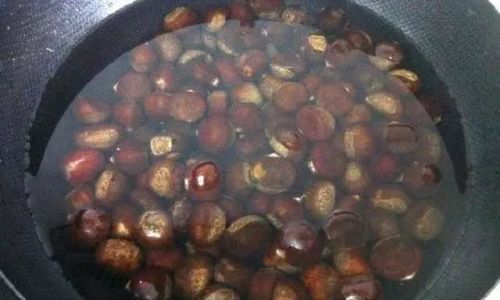Introduction
Crabs, known for their delicate flavor and succulent meat, are a culinary delight enjoyed worldwide. Whether you’ve caught them fresh from the sea, purchased them live from a market, or received them as a gift, knowing how to store crabs properly is crucial to retaining their freshness and quality. Among various preservation methods, freezing stands out as one of the most effective ways to extend the shelf life of crabs. This comprehensive guide will walk you through the step-by-step process of how to freeze crabs, ensuring that you capture their peak flavor and texture for future meals.
Understanding the Importance of Proper Freezing

Freezing crabs not only preserves their nutritional value but also halts the enzymatic processes that can lead to spoilage. When done correctly, frozen crabs can retain their original taste and texture for several months, providing a convenient and reliable source of high-quality seafood throughout the year. However, improper freezing techniques can result in freezer burn, loss of moisture, and a decline in overall quality. Therefore, it’s essential to follow a meticulous process to achieve optimal preservation.
Preparing Crabs for Freezing
Before you begin the freezing process, it’s crucial to prepare the crabs correctly. This involves selecting the right crabs, cleaning them thoroughly, and deciding whether to freeze them whole, cooked, or just their meat.
Selection and Handling
- Live Crabs: Choose crabs that are active, have a strong odor, and firm shells. Avoid crabs with cracked shells, broken legs, or a musty smell.
- Freshly Caught or Purchased Crabs: Ensure they are kept in a cool, moist environment until you’re ready to process them. This helps maintain their freshness.
Cleaning Crabs
- Whole Crabs: Rinse the crabs under cold running water to remove any dirt or debris. Use a brush to scrub the exterior, especially in the crevices and under the shell.
- Crab Meat Only: If you plan to freeze just the meat, carefully crack and clean the crab shells. Remove and discard any internal organs, such as the stomach (the “dead man’s fingers”), gills, and intestinal tract. Rinse the meat thoroughly before proceeding.
Cooking (Optional)
- Boiling or Steaming: For best results, cook crabs before freezing. Boiling involves immersing them in boiling water for about 15-20 minutes, depending on their size. Steaming is another option, where crabs are placed in a steamer basket over boiling water for a similar duration.
- Cooling: Once cooked, allow the crabs to cool completely. This can be done by placing them on a rack in a single layer to ensure even cooling and prevent moisture accumulation.
Freezing Techniques
Now that your crabs are prepared, it’s time to freeze them. There are several methods you can choose from, depending on your preferences and the type of crab you’re working with.
Freezing Whole Crabs
- Wrapping: Wrap each crab individually in plastic wrap, ensuring there are no gaps where air can enter. This helps prevent freezer burn.
- Sealing: Place the wrapped crabs in a heavy-duty freezer bag, removing as much air as possible before sealing. Label the bag with the date and contents.
- Freezing: Arrange the bags flat in the freezer to maximize space and ensure even freezing.
Freezing Crab Meat

- Portioning: If freezing crab meat, portion it into manageable sizes according to your cooking needs. This makes thawing and using the meat easier.
- Freezer-Safe Containers: Place the portions in airtight freezer containers or heavy-duty freezer bags. Again, remove as much air as possible before sealing.
- Labeling and Freezing: Label the containers or bags with the date and type of crab meat. Place them in the freezer.
Ice Glazing (Optional)
- For an extra layer of protection, you can ice-glaze your crabs or crab meat before freezing. This involves lightly coating them with a thin layer of ice by placing them on a baking sheet in the freezer for an hour or until frosty. Once glazed, transfer them to freezer bags or containers as described above.
Storage and Longevity
Properly frozen crabs can be stored for several months without significant loss of quality. Here are some tips for maintaining their freshness:
- Temperature: Ensure your freezer maintains a consistent temperature of 0°F (-18°C) or below.
- Organization: Keep frozen crabs in an area where they won’t be crushed by heavier items.
- Rotation: Use the oldest crabs first to ensure nothing goes to waste.
Thawing and Cooking Frozen Crabs
When you’re ready to use your frozen crabs, proper thawing is key to maintaining their texture and flavor.
- Refrigerator Thawing: Place the frozen crabs in the refrigerator overnight. This is the slowest but safest method, preventing bacterial growth.
- Cold Water Thawing: Submerge sealed freezer bags of crabs in a bowl of cold water, changing the water every 30 minutes until thawed. Avoid using hot water, which can promote bacterial growth and cook the crab unevenly.
- Microwave Thawing: Use the defrost setting, checking frequently to prevent overcooking. This method is faster but requires closer monitoring.
Once thawed, crabs can be cooked or prepared as desired. Remember, never refreeze thawed crabs, as this can compromise their safety and quality.
Conclusion
Freezing crabs is a simple yet effective way to preserve their freshness and enjoy them year-round. By following the steps outlined in this guide—from selection and preparation to freezing and thawing—you can ensure that your crabs retain their optimal taste, texture, and nutritional value. Whether you’re a seafood enthusiast or just looking to make the most of your catch, knowing how to freeze crabs properly is a skill that will serve you well in the kitchen. Happy freezing and feasting!





0 comments